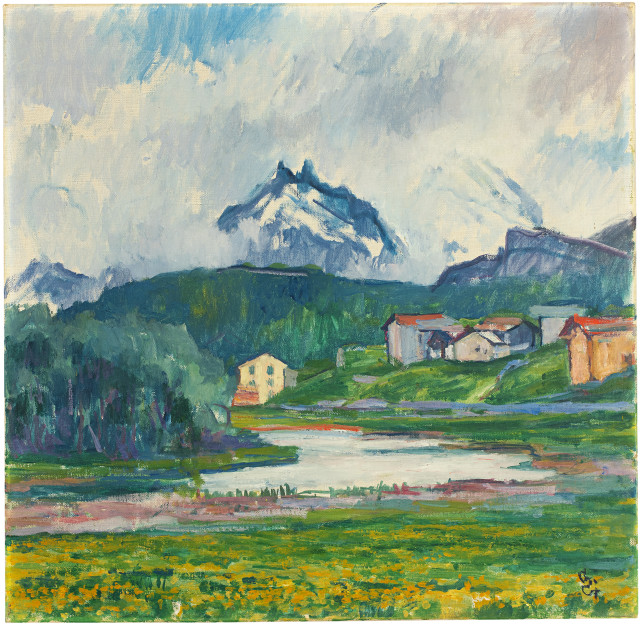- EN
Log in
- Live Auctions
- Past auctions
- More
- Gallery
- Art Dealing
- Publishing
- Kornfeld today
- The Story of Kornfeld
- Information






Stampa 1868 - 1933 Glion
1926
Oil on canvas
48.5x50 cm
Monogrammed lower right by the artist "G./G.", signed, inscribed and dated on the reverse "Giovni Giacometti / Maloja 1926"
Paul Müller/Viola Radlach, Giovanni Giacometti, catalogue raisonné of paintings, vol. II/2, Zurich 1997, no. 1926.09
Private collection Switzerland
On the original stretcher in the old nailing. In impeccable condition and fresh in colour
Piz Lizun is shrouded by clouds and fog, which only partially allow the sunlight to break through and obscure the summer sky. "[...] one eventually learns to see many charms in it, and one believes that the fog is actually even more beautiful than the brutal sunshine." (from letter by Giovanni Giacometti to Cuno Amiet, 2 March 1912). Clearly visible are the houses of Capolago near Maloja, where Giacometti's wife Annetta inherited a house from her uncle in 1909. The family had been staying in this house during the summer months since 1901. In 1911, the artist converted the barn into a studio. The Inn, the tributary of Lake Sils, is visible in the foreground
1926
Öl auf Leinwand
48,5x50 cm
Unten rechts vom Künstler monogrammiert "G./G.", rückseitig signiert, bezeichnet und datiert "Giovni Giacometti / Maloja 1926"
Paul Müller/Viola Radlach, Giovanni Giacometti, Werkkatalog der Gemälde, Band II/2, Zürich 1997, Nr. 1926.09
Privatsammlung Schweiz
Auf dem originalen Chassis in der alten Nagelung. In tadelloser und farbfrischer Erhaltung
Der Piz Lizun wird durch Wolken und Nebelschwaden umhüllt, welche das Sonnenlicht nur teilweise durchbrechen lassen und den sommerlichen Himmel verdecken. "[...] man lernt schliesslich, viele Reize darin zu sehen, und man glaubt, dass der Nebel eigentlich noch schöner sei als der brutale Sonnenschein." (aus Brief von Giovanni Giacometti an Cuno Amiet, vom 2. März 1912). Klar ersichtlich sind die Häuser von Capolago bei Maloja, wo Giacomettis Frau Annetta 1909 ein Haus von ihrem Onkel erbte. Die Familie hielt sich schon seit 1901 jeweils während der Sommerzeit in diesem Haus auf. 1911 baute der Künstler die Scheune zu einem Atelier aus. Im Vordergrund ist der Inn, der Zufluss des Silsersees, ersichtlich







